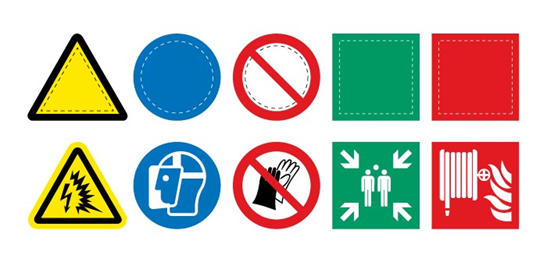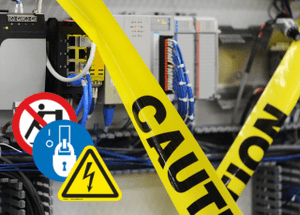National Preparedness Month Tips: Things to Consider When Planning

September is National Preparedness Month (NPM), which is a time for businesses to take a look at their disaster plans and make changes. The theme for the 2020 NPM campaign is “Disasters Don’t Wait. Make Your Plan Today.” As businesses and schools around the world continue to respond to COVID-19, now is an especially fitting time to take this on. Read on to learn more about NPM’s weekly initiatives and about preparing for disaster during COVID-19.
Why Preparation Matters
If you’re a business owner, taking precautions and making preparations to stay
safe are part of your responsibility to your workers. Following various natural
disasters, like Hurricanes Katrina and Sandy, legal precedent started to emerge
about an
organization’s
duty to prepare. For example, if it’s determined that you failed to clearly mark escape routes
with
emergency
signs and other aids, you could be found liable for the death or injury
of an employee.
To promote its mission, the 2020 NPM campaign prioritizes the following four steps:
- Week 1 - Make A Plan: Develop a plan around how you will communicate with coworkers before, during and after a disaster. As any effective plan needs updating, be sure to include updates based on the Center for Disease Control and Prevention’s (CDC) recommendations, including those related to COVID-19.
- Week 2 - Build A Kit: Disaster can strike at any time, and preparing necessary supplies in advance is a suggested proactive measure. Consider assembling supplies that will last for several days. Update your kits and supplies based on expiration/best buy dates and recommendations from the CDC.
- Week 3 - Prep for Disasters: Preparation helps limit the impact disasters have. Know the risk of disasters in your work area, and learn ways to make your business stronger in the event of a disaster and the hazards it can bring. Always act fast if you receive a local warning or alert.
- Week 4 - Teach Children About Preparedness: If you’re a school or other facility with younger people present, it’s important to talk to them about preparing for emergencies and what to do if a physical separation or other disaster-related situation occurs. Try to get them involved and aware from an early age.
When disaster strikes, steps like these are critical to emergency planning, preparedness and recovery efforts.
Recent ISO 7010 Updates Related to Emergencies and Emergency
Planning
ISO 7010 is an International Organization for Standardization (ISO) technical
standard for graphical hazard symbols on hazard and safety signs, including
those indicating emergency exits. In August 2019, the ISO 7010:2019 standard
was revised. The standard now includes the addition of new symbols, with many
related to emergency and emergency planning, including: fire blanket,
protection shelter, emergency exit for those with impairments, medical grab bag
and survival clothing.
Understanding ISO Symbols and Symbol Surround Shapes
The symbols in ISO 7010 use colors and principles set out in ISO 3864-2.
According to ISO, there are five types of safety symbols each with its own
defined combination of color, contrast color and shape:
- Warning: black-banded yellow triangle with black symbol
- Mandatory action: blue circle with white symbol
- Prohibition: black symbol behind red circle with slash
- Safety equipment location signs/safe condition: green rectangle with white symbol
- Fire equipment location: red rectangle with white symbol

The ISO surround shapes for each of the five types of safety symbols (top row) and examples of ISO or ISO-formatted safety symbols (bottom row)
Planning Is Key
Now that you have some insights about the standards, it would be a good idea to
start updating your plan during this month of heightened awareness. Here are a
few things to consider.
Preparing for Disasters During
COVID-19
While disasters bring with them their own set of awful circumstances — they
don’t wait for a pandemic to be over before striking. The Federal Emergency
Management Agency recommends taking the following steps in case evacuation and
emergency shelter are necessary during COVID-19:
Evacuation During COVID-19:
A natural disaster could force you to evacuate your business. Help solidify
your emergency plans by keeping a supply kit stocked with cloth face coverings,
disinfecting supplies and hand sanitizers. Check with your local officials
about area shelters that will be open during the lockdown.
Readying for Shelter: If a natural disaster forces you to visit a shelter during quarantine, it’s important to follow local instructions. Take an emergency supply kit and observe the CDC’s latest guidelines (wear cloth face coverings, use hand sanitizers). Stay fix feet away from people who are not in your immediate circle to help reduce the spread of the COVID-19 virus.
Planning ahead as much as possible for how to deal with disasters during COVID-19 can help mitigate potential negative effects. While families are spending more time indoors during quarantine, take the time to iron out a plan and practice it.
Potential Threats
The United States features nearly every type of geography on the planet, which
is why vulnerabilities can often vary greatly from one region to another. While
people in California deal with the constant threat of earthquakes and
wildfires, those on the gulf coast spend the late summer and fall tracking tropical
depressions as they move off the west coast of Africa. During National
Preparedness Month, take a look at your area’s past and make a list of the
emergencies that regularly happen. It’s much harder to prepare without a basic
idea of threats that could be in your future.
Events like 9/11 show that it’s nearly impossible to anticipate every potential threat, but preparedness for likely disasters can often be adapted when the unexpected does occur. Once you’ve come up with a list of threats to your business, start working on a plan of action for each one. Here are a few suggestions on how to prepare for various situations.
Earthquakes
While California and Alaska frequently experience earthquakes, recent temblors
in areas such as the Mid-Atlantic are a reminder that tremors could strike
anywhere. To make sure your home or business is ready when the ground starts
shaking, take a few precautionary steps:
-Don’t hang anything heavy over desks, beds or
other areas where people live and work.
-Make sure large appliances are secured and
outfitted with flexible water and gas connections
-Anchor top-heavy furniture securely to walls
and move heavier objects to lower shelves whenever possible
-Educate employees or family members about
staying clear of windows and hiding under sturdy objects until the shaking
subsides, and point out safe spaces in your building.
Hurricanes and Floods
Hurricanes pack strong winds and heavy rains, but a significant amount of the
damage done during these weather events comes from the storm surge that
inundates the area with water. When a hurricane takes aim at your location,
start by boarding up windows and securing outdoor furniture. Familiarize
yourself with local evacuation routes and come up with a meeting point where everyone
can check in.
A hurricane isn’t the only way for an area to flood. In densely populated areas with minimal permeable surfaces, it can only take a heavy rain to cause disastrous flash flooding. Floods can often strike with minimal warning, which is why the best preparatory step you can take is examining your proximity to streams, dams and rivers to see if you’re vulnerable. When the water starts rising, turn off the electricity and other utilities and head to the highest point of the building until the situation improves.
Tornadoes
Each state in the contiguous United States has experienced tornadoes at some
point in history, which is why everyone should have a plan in place. Because
these destructive events happen so quickly, the best way to prepare is
education. Teach your people where the safest point in the building is during a
tornado and reinforce that information with signage that clearly marks safe
spaces and
exit
signs.
Gather Appropriate Supplies
It can often take a significant amount of time for conditions to improve after
a disaster, which is why it’s important to outfit your safe spaces with ample
supplies. Not only should your building have a first aid kit in every shelter
space, but it’s also a good idea to have one in each of your vehicles. Stock
shelters with three days of water, nonperishable food, medical supplies,
flashlights, radios and ample batteries to keep everything powered.
Start Planning Today
Emergency Preparedness Month is a great time to start working on a plan for
your home or business, but don’t limit your efforts to four weeks in September.
When it’s time to outfit your building with emergency,
COVID-19 signs
and other visual markers, turn to the experts at Clarion Safety. Reach out
if you need assistance or let us know how we can help with your project.



